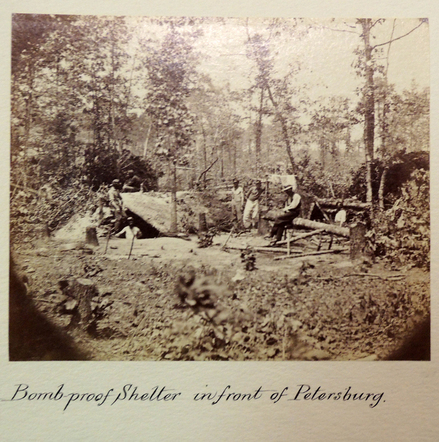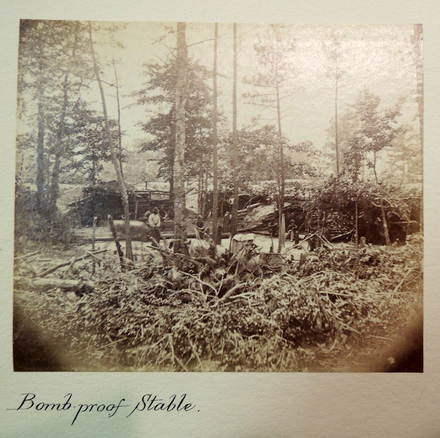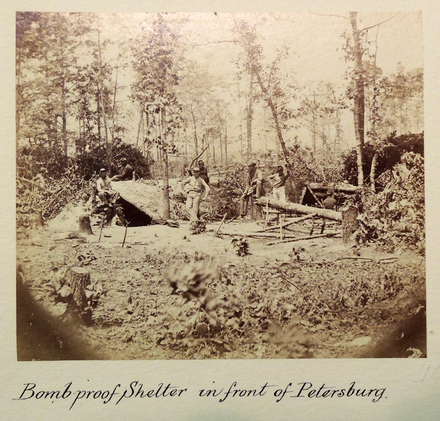Graphic Arts Collection GA 2010.00034
“The nine-month siege of Petersburg, which is the longest siege in the history of American warfare and involved nearly 150,000 soldiers in both Union and Confederate armies, saw some of the most sustained fighting and extensive building of fortifications of the Civil War. The Petersburg lines witnessed the further development of redoubts, lunettes, and redans, as well as bomb-proof shelters and powder magazines, covered ways, rifle trenches, and rifle pits. Mining was attempted by both armies, and resulted in the debacle of the Battle of the Crater on July 30, 1864. With the final collapse of the sparsely manned Petersburg lines on April 2, 1865, the Confederates evacuated their capital and one week later the remains of the Army of Northern Virginia surrendered at Appomattox Court House. The Civil War was over, and the face of warfare had changed forever.”
— Ron Field, American Civil War Fortifications (Osprey Publishing, 2005).


